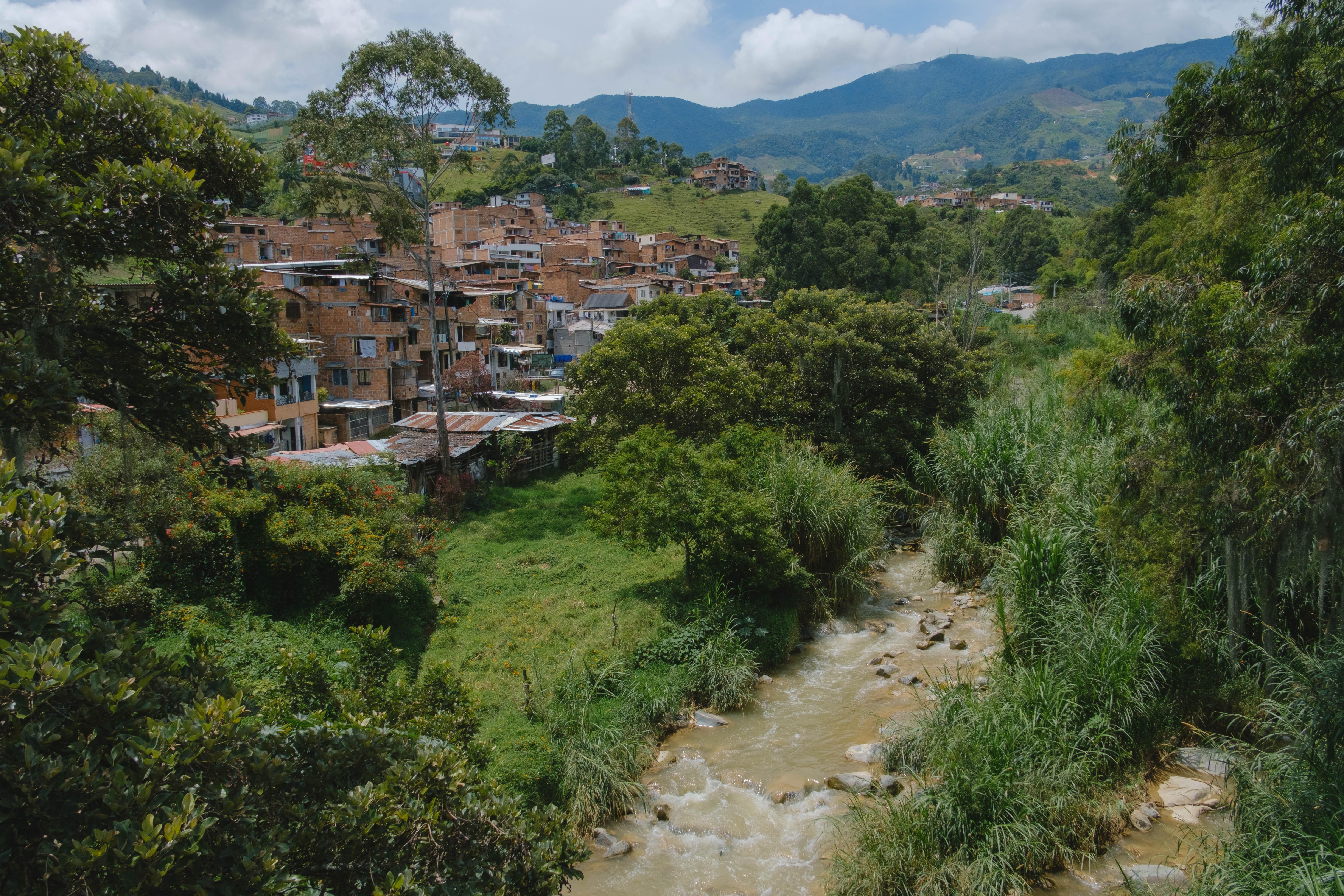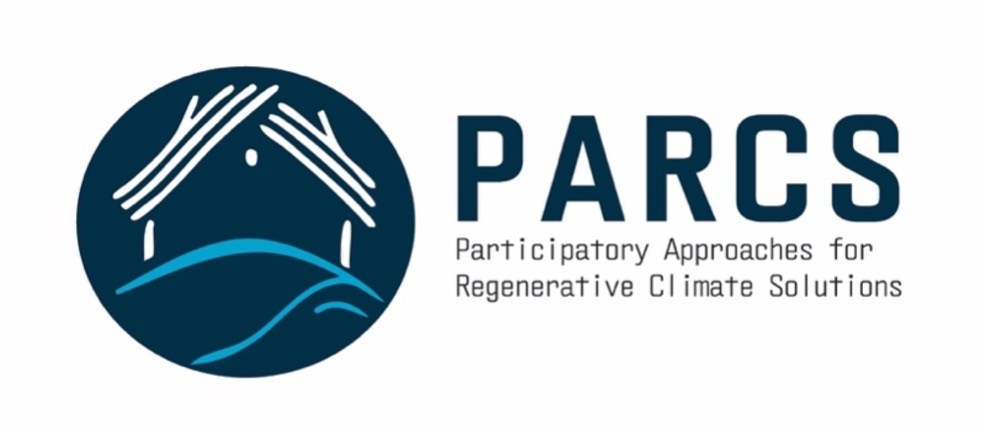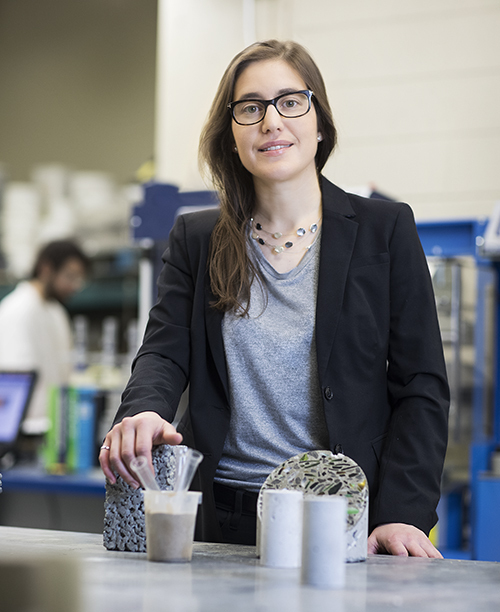Colombie

Towards co-created resiliency in communities all over the world
PARCS (Participatory Approaches for Regenerative Climate Solutions) is an international initiative dedicated to addressing the urgent challenges of climate change through inclusive, community-driven, and regenerative design strategies.
As climate change intensifies, vulnerable communities worldwide face increasing threats from extreme weather events, including floods, droughts, and storms. Rising global temperatures are accelerating environmental degradation and increasing the frequency and severity of climate-related disasters.

In response, PARCS promotes the design of built environments that are not only environmentally sustainable but also resilient to these extreme events, especially in regions where vulnerable populations are most at risk.

This initiative is part of a larger international project: "Participatory Collaborative Research to Enhance Climate Change Adaptation and Mitigation in Underserved Communities in Southeast Asia and North and South America."
The project integrates expertise from multiple disciplines:
It fosters a rich exchange of knowledge between the Global South and the Global North.
PARCS bridges the gap between scientific research and community action by applying a participatory methodology to co-create sustainable, locally adapted solutions. The initiative integrates risk assessment with regenerative design to develop infrastructure that:
By integrating environmental science, policy analysis, and community-based methods, PARCS seeks to develop scalable and evidence-based adaptation strategies.
Its focus:
PARCS addresses the intersection of climate risk, policy, and local adaptive capacity.
Ultimately, PARCS aims to build a flexible adaptation framework grounded in the co-production of knowledge, ensuring that strategies align with local realities while informing global discussions on climate policy and urban resilience.

Vision and Purpose
Tackling climate risks through inclusive, community-based action.
Approach Summary: Three core pillars
Climate Risk Mapping and Perception
Co-design of Sustainable Solutions
Community-Led Co-Implementation


A collaborative process where all stakeholders actively participate in shaping solutions.
How It Fits into the Project: The project will produce a scalable and replicable methodology for co-creating regenerative solutions with the communities, integrating local knowledge into planning and action.
Approaches that restore and revitalize ecological and social systems beyond just sustaining them.
How It Fits into the Project: The methodology that will be proposed will focus on maximizing the regenerative aspect of the solutions to be co-created.
A process where communities drive their systemic changes based on local priorities and capacities.
How It Fits into the Project: The project centers community leadership in territorial transformation, particularly through inclusive governance and capacity-building.
The ability to anticipate, adapt to, and recover from climate-related disruptions.
How It Fits into the Project: It promotes climate-resilient strategies like nature-based infrastructure and adaptive planning for vulnerable communities.
Design processes that actively involve users in creating solutions tailored to their needs and contexts.
How It Fits into the Project: The methodology includes participatory design tools to engage communities in creating spatial and social interventions.
Infrastructure that minimizes environmental impact while serving communities effectively and equitably.
How It Fits into the Project: The research develops sustainable, community-centred infrastructure using local materials and ecological design.
Collaborative efforts with communities to ensure meaningful participation in projects affecting their lives.
How It Fits into the Project: Ongoing engagement is central to the methodology, ensuring communities shape climate and development responses.
At the core of PARCS are three Living Labs—collaboratively developed with local stakeholders in Colombia, Indonesia, and the U.S. Gulf Coast.
These regions face high exposure to risks such as sea-level rise, fluvial and coastal flooding, and extreme storms. The Living Labs serve as real-world environments for co-designing climate-resilient and regenerative solutions tailored to local needs.
Explore how these locally grounded solutions are taking shape across three distinct contexts.
Proposition 1
Claudiane Ouellet-Plamondon is a full professor at ÉTS’s Construction Engineering Department and holder of the Canada Research Chair in Sustainable Multifunctional Construction Materials. She has expertise in the development of climate-resilient, durable and cost-effective materials, focusing on local resources and circular economy.

Claudiane Ouellet-Plamondon is a full professor at ÉTS’s Construction Engineering Department and holder of the Canada Research Chair in Sustainable Multifunctional Construction Materials. She has expertise in the development of climate-resilient, durable and cost-effective materials, focusing on local resources and circular economy.

Claudiane Ouellet-Plamondon is a full professor at ÉTS’s Construction Engineering Department and holder of the Canada Research Chair in Sustainable Multifunctional Construction Materials. She has expertise in the development of climate-resilient, durable and cost-effective materials, focusing on local resources and circular economy.

Claudiane Ouellet-Plamondon is a full professor at ÉTS’s Construction Engineering Department and holder of the Canada Research Chair in Sustainable Multifunctional Construction Materials. She has expertise in the development of climate-resilient, durable and cost-effective materials, focusing on local resources and circular economy.

Claudiane Ouellet-Plamondon is a full professor at ÉTS’s Construction Engineering Department and holder of the Canada Research Chair in Sustainable Multifunctional Construction Materials. She has expertise in the development of climate-resilient, durable and cost-effective materials, focusing on local resources and circular economy.

Claudiane Ouellet-Plamondon is a full professor at ÉTS’s Construction Engineering Department and holder of the Canada Research Chair in Sustainable Multifunctional Construction Materials. She has expertise in the development of climate-resilient, durable and cost-effective materials, focusing on local resources and circular economy.

Claudiane Ouellet-Plamondon is a full professor at ÉTS’s Construction Engineering Department and holder of the Canada Research Chair in Sustainable Multifunctional Construction Materials. She has expertise in the development of climate-resilient, durable and cost-effective materials, focusing on local resources and circular economy.

Claudiane Ouellet-Plamondon is a full professor at ÉTS’s Construction Engineering Department and holder of the Canada Research Chair in Sustainable Multifunctional Construction Materials. She has expertise in the development of climate-resilient, durable and cost-effective materials, focusing on local resources and circular economy.

Claudiane Ouellet-Plamondon is a full professor at ÉTS’s Construction Engineering Department and holder of the Canada Research Chair in Sustainable Multifunctional Construction Materials. She has expertise in the development of climate-resilient, durable and cost-effective materials, focusing on local resources and circular economy.

Claudiane Ouellet-Plamondon is a full professor at ÉTS’s Construction Engineering Department and holder of the Canada Research Chair in Sustainable Multifunctional Construction Materials. She has expertise in the development of climate-resilient, durable and cost-effective materials, focusing on local resources and circular economy.

Claudiane Ouellet-Plamondon is a full professor at ÉTS’s Construction Engineering Department and holder of the Canada Research Chair in Sustainable Multifunctional Construction Materials. She has expertise in the development of climate-resilient, durable and cost-effective materials, focusing on local resources and circular economy.

Claudiane Ouellet-Plamondon is a full professor at ÉTS’s Construction Engineering Department and holder of the Canada Research Chair in Sustainable Multifunctional Construction Materials. She has expertise in the development of climate-resilient, durable and cost-effective materials, focusing on local resources and circular economy.

Claudiane Ouellet-Plamondon is a full professor at ÉTS’s Construction Engineering Department and holder of the Canada Research Chair in Sustainable Multifunctional Construction Materials. She has expertise in the development of climate-resilient, durable and cost-effective materials, focusing on local resources and circular economy.

Claudiane Ouellet-Plamondon is a full professor at ÉTS’s Construction Engineering Department and holder of the Canada Research Chair in Sustainable Multifunctional Construction Materials. She has expertise in the development of climate-resilient, durable and cost-effective materials, focusing on local resources and circular economy.

Claudiane Ouellet-Plamondon is a full professor at ÉTS’s Construction Engineering Department and holder of the Canada Research Chair in Sustainable Multifunctional Construction Materials. She has expertise in the development of climate-resilient, durable and cost-effective materials, focusing on local resources and circular economy.

Claudiane Ouellet-Plamondon is a full professor at ÉTS’s Construction Engineering Department and holder of the Canada Research Chair in Sustainable Multifunctional Construction Materials. She has expertise in the development of climate-resilient, durable and cost-effective materials, focusing on local resources and circular economy.

Claudiane Ouellet-Plamondon is a full professor at ÉTS’s Construction Engineering Department and holder of the Canada Research Chair in Sustainable Multifunctional Construction Materials. She has expertise in the development of climate-resilient, durable and cost-effective materials, focusing on local resources and circular economy.

Claudiane Ouellet-Plamondon is a full professor at ÉTS’s Construction Engineering Department and holder of the Canada Research Chair in Sustainable Multifunctional Construction Materials. She has expertise in the development of climate-resilient, durable and cost-effective materials, focusing on local resources and circular economy.

Proposition 2

Professeure

Professeure

Professeure

Professeure

Professeure

Professeure

Professeure

Professeure

Professeure

Professeure
Proposition 3 (proposition originale)
PARCS is led by an interdisciplinary, trans-sectoral, and diverse research team that brings together institutions and grassroots collaborators from around the world. Combining expertise in urban planning, psychology, social sciences, and architecture, the network fosters knowledge exchange between the Global South and the Global North.
Assembled to meet ambitious objectives, the team brings together a wide range of talents. Several members are recognized national experts who have previously contributed to the International Energy Agency (IEA EBC) Annexes 72 and 57 and are currently involved in Annex 89 – Ways to Implement Net-zero Whole Life Carbon Buildings. This ongoing work focuses on identifying stakeholder pathways and actions to achieve net-zero greenhouse gas emissions in buildings globally.
The PARCS team also has a strong track record in interdisciplinary, trans-sectoral territorial interventions and maintains active, long-standing relationships with communities involved in the three living labs.








Coming soon. Stay tuned for upcoming articles, papers, and reports.
